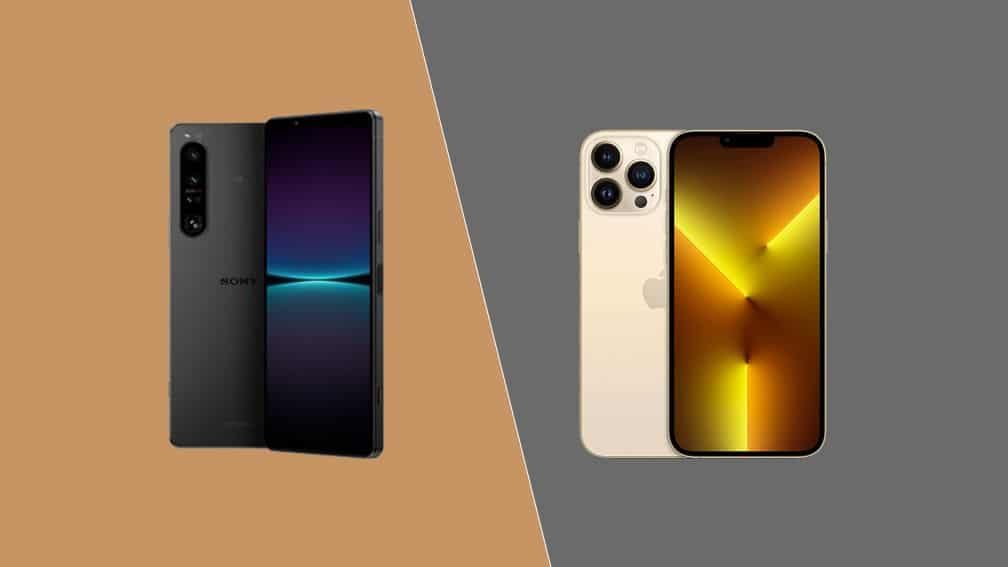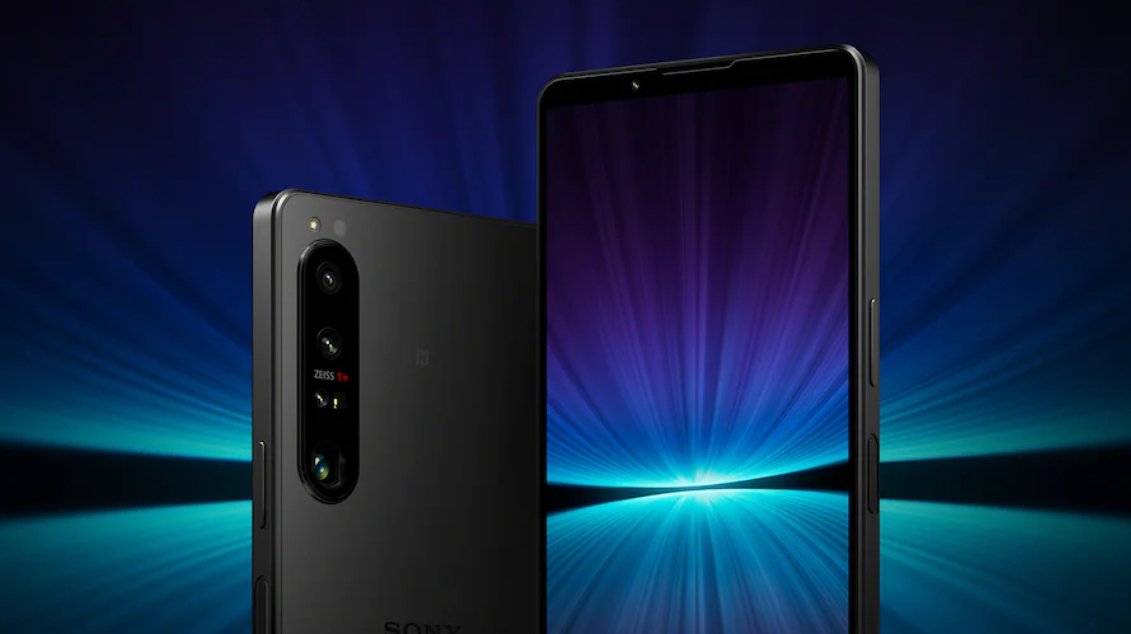
The Xperia 1 IV is Sony's latest smartphone for enthusiasts and is packed with multimedia potential.
But when it comes to creating a phone that professionals and media alike love to use, Apple is king of the hill. Its iPhone 13 Pro Max is in the running to be called the best flagship phone on the market today due to its overall excellence.
Does Sony have the key to access this same exclusive club? We'll take a look.
Sony Xperia 1 IV vs iPhone 13 Pro Max price and availability
Sony announced the Sony Xperia 1 IV on May 11, 2022, but the phone won't be available to buy until June 16 in the UK and Europe, and September 1 in the US. , the only 512GB option will cost €1599; the UK and Europe will get a 256GB model for €1299/€1399.
No word yet on availability in Australia, but we're not hopeful. Sony doesn't generally sell its phones in the region.

The iPhone 13 Pro Max hit stores on September 24, 2021. Prices start at $1,099 / £1,049 / AU$1,699 for the 128GB model; goes up to €1199/€1149/AU$1869 for 256GB; then $1399 / £1349 / AU$2219 for 512GB; and top out at $1,599 / £1,549 / AU$2,569 for the new 1TB model.
Overall, it's a win for the iPhone 13 Pro Max in terms of price and availability.
Design of the Sony Xperia 1 IV in front of the iPhone 13 Pro Max
The Sony Xperia 1 IV is almost identical to the Sony Xperia 1 III, with the same flat sides and a strangely tall form factor.
With the iPhone 13 Pro Max, Apple has also retained the design language of its previous phone. Like the iPhone 12 Pro Max, the 13 has a flat stainless steel frame and equally flat front and back surfaces.
Sony's phone measures 165 x 71 x 8,2mm and weighs 185g. This makes it taller and thicker than the iPhone 13 Pro Max (160,8 x 78,1 x 7,65mm), but also narrower and significantly lighter. There's no heavy stainless steel weighing you down here.
One of the main reasons for the Sony Xperia 1 IV's height is its tall front and chin bezels. Unlike pretty much every other current flagship, it houses its selfie camera above the display rather than in a display notch.
The iPhone, of course, has the mother of all display notches eating away at the top edge of your screen. Apple claims to have reduced the size of the notch by 20%, but it's still a bit annoying.
Sony still fills the edges of its phone with points of interest, which explains the physical camera button and 3,5mm headphone jack; these should appeal to photographers and audiophiles, respectively.

On the back, the iPhone 13 Pro Max has its camera sensors in a square configuration; Sony is set to something like a vertical diamond.
You can get the Sony Xperia 1 IV in black, white or purple. On iPhone, there's a wider range of color options: Graphite, Gold, Silver, Sierra Blue, and Alpine Green.
Both phones are adequately resistant to dust and water. The iPhone 13 Pro Max is IP68 rated, while the Sony Xperia 1 IV gets an even deeper IP68/IP65 certification.
There is Gorilla Glass Victus protecting the Sony screen; Apple has equipped iPhone with its Ceramic Shield, which is made by embedding ceramic nanocrystals into glass through a high-temperature crystallization process.
(*13*) Sony Xperia 1 IV screen versus iPhone 13 Pro MaxThe Sony Xperia 1 IV features the same 4-inch 6,5K OLED display as the Xperia 1 III. The most notable part of this is the "4K" figure, which equates to a massive 3840 x 1644 resolution.
By contrast, the iPhone 13 Pro Max's screen is a 6,7-inch OLED with a resolution of 2778 x 1284, to be so neat.

This means that the Sony Xperia 1 IV is the only current flagship capable of playing 4K content natively. That's clearly what Sony is aiming for here, with that 21:9 aspect ratio and uninterrupted canvas.
Both screens refresh at a maximum of 120Hz, so they're equally smooth.
Sony has increased the brightness of its screen by 50%. Whether that helps it compete with the iPhone's punchy panel, which remains one of the best in the business, remains to be seen.
Sony Xperia 1 IV in front of the iPhone 13 Pro Max camera
Both phones pack triple 12MP camera systems, and both manufacturers are known for their natural color science. But that's where the similarities end.
Apple and Sony take fundamentally different approaches to photography. The iPhone is all about the shoot-and-forget experience, ditching tedious menus and the need to think about your framing.
Sony's Xperia 1 range is all about pro-grade control, with an in-depth camera app that mirrors its range of higher-end Alpha cameras and a two-tier physical shutter button on the right edge.
The big step forward with the Xperia 1 IV is with this telephoto system. This time you get continuous zoom between 70mm and 125mm, which is roughly equivalent to optical zoom which can be between 3,5x and 5,2x. It is the first one.
On the other hand, the iPhone 3 Pro Max's 13x zoom looks a bit tired.
Still, the image quality of the iPhone 13 Pro Max's camera is well-regarded at this point. It is arguably the best smartphone camera system on the market today.

This is led by a large main sensor (and, at f/1.5, wide open) that can capture some really impressive images in all lighting conditions, aided by an incredibly stable sensor-shift stabilization system. Even the ultra wide angle can also take sharp night photos this time.
Hardware aside, much of the fantastic image quality comes from Apple's next-generation image processing technology, which helps produce great results with minimal input. Sony phones have never been able to achieve the same, despite offering unrivaled control over your shots.
Apple's cameras have always had an edge over the competition when it comes to video recording, but Sony is looking to step it up with the Xperia 1 IV. Sony's latest phone captures 4K 120fps slow-motion recording over the iPhone's 4K/60fps; and Sony also gave the Xperia 1 IV wider dynamic range and a Videography Pro mode for live streaming.
The iPhone 13 Pro Max has its own video tricks, including a cinematic mode that lets you apply portrait-like bokeh effects to your footage and adjust the point of focus in post.
Both phones have 12MP selfie cameras, but the Xperia 1 IV has the larger sensor of the two.
Specifications and performance of the Sony Xperia 1 IV against the iPhone 13 Pro Max
We all know the story now. Android phones may still improve in performance, but they'll still fall short of the latest from Apple.
We haven't been able to put the Sony Xperia 1 IV to the test yet, but now we can tell you with confidence that it won't be as fast as the iPhone 13 Pro Max. In fact, it runs the exact same Snapdragon 8 Gen 1 chip that powers most of its rivals, from the Xiaomi 12 Pro to the Oppo Find X5 Pro.
(*two*)
(Photo credit: Sony)And in all of our tests and benchmarks, these phones fall well short of the iPhone 13 Pro Max. Key to this is Apple's latest custom A15 Bionic chip, which is a monster.
Benchmarks aside, you won't notice the difference in performance between the latest iPhone and any Snapdragon 8 Gen 1 phone. Both chips perform much better than they should for any modern task, whether it's juggling multiple apps or playing games. high-end 3D games.
The Sony Xperia 1 IV has double the RAM of the iPhone 13 Pro Max, for what it's worth (12GB vs. 6GB). Still, that's not much, given the fundamental differences between how iOS and Android manage resources.
Apple's device comes with much more storage options than Sony's. You can choose between 128, 256, 512 or 1 TB wherever you are. With the Sony Xperia 1 IV you get 256GB in the UK and Europe, or 512GB in the US.
Sony Xperia 1 IV battery life vs. iPhone 13 Pro Max
Sony has increased the capacity of its flagship battery to 5000 mAh. It's a healthy size for a flagship Android phone and is significantly larger than the 4352mAh cell in the iPhone 13 Pro Max.
However, as we just said, iOS and Android manage their hardware resources very differently, and we expect roughly parity between the two.
However, the Sony Xperia 1 IV will have to take the cat out of the bag to match the iPhone 13 Pro Max. With the Xperia 1 III, we had about 10 per cent left in the tank at the end of a long day. With the iPhone 13 Pro Max, we had a third of the deposit left. Hopefully Sony's increased brute force capabilities coupled with the new Snapdragon 8 Gen 1 and software improvements will bridge that gap.

Neither phone is among the most impressive in terms of charging speed. Sony has equipped its latest phone with the same 30W wired charging support as before, while the iPhone 13 Pro Max can take a similar 27W.
When rivals offer 80W, 100W and even 120W charging, those specs aren't too great. However, both manufacturers claim that their phones can be charged to 50% in just 30 minutes.
Neither manufacturer includes a charger in the box, but at least Apple gives you a cable.
To go
Sony seems to have created another media enthusiast's dream with the Sony Xperia 1 IV. He picks up where the Sony Xperia 1 III left off, with an even more flexible camera system, brighter 4K display and longer battery life.
Whether these updates are enough to close the one-point review score gap between its predecessor and the iPhone 13 Pro Max remains to be seen. We were very impressed with the latest from Apple for its excellent Fire-and-Forget camera, excellent battery life, and unparalleled performance.
One thing seems certain: Sony will always have a place in the hearts of a certain type of fan obsessed with serious photography, audio fidelity, and proper video playback. But can you mix it with the iPhone in the mainstream this time?